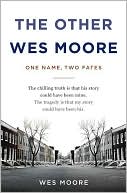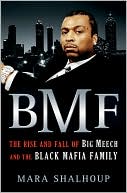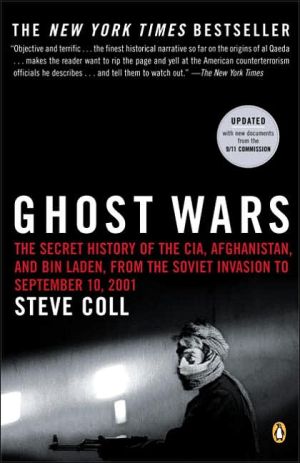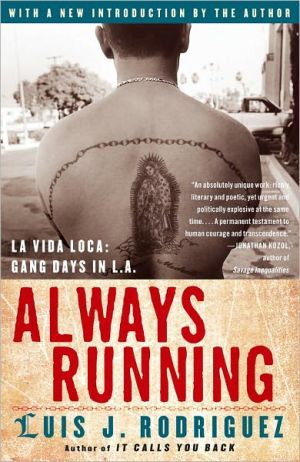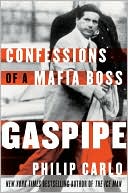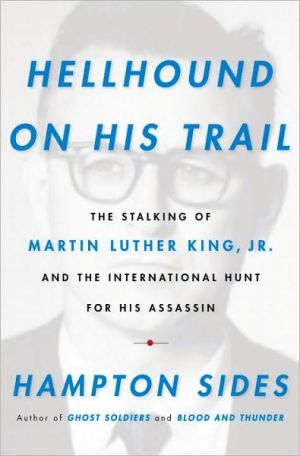Good Rat: A True Story
Of course Pulitzer Prize winner Jimmy Breslin recognized Burton Kaplan right away as the Mafia witness of the ages. Breslin comes from the same Queens streets as mob bosses John Gotti and Vito Genovese. But even they couldn't match Kaplan in crime—and neither could anybody else.\ In his inimitable New York voice, Breslin, "the city's steadiest and most accurate chronicler" (Tom Robbins, Village Voice), gives us a look through the keyhole at the people and places that define the...
Search in google:
In his inimitable New York voice, Pulitzer Prize winner Jimmy Breslin gives us a look through the keyhole at the people and places that define the Mafia—characters like John Gotti, Sammy "the Bull" Gravano, Anthony "Gaspipe" Casso (named for his weapon of choice), and Jimmy "the Clam" Eppolito—interwoven with the remarkable true-crime saga of the good rat himself, Burt Kaplan of Bensonhurst, Brooklyn, the star witness in the recent trial of two NYPD detectives indicted for carrying out eight gangland executions. Through these unforgettable real-life and long-forgotten Mafia stories, Jimmy Breslin captures the moments in which the mob was made and broken. The New York Times - Marc Weingarten The Good Rat is not an apologia for old killers now departed. Its main narrative is devoted to the story of Louis Eppolito and Stephen Caracappa, two New York police detectives who were fingered as mob assassins a few years ago by Burton Kaplan, a drug dealer and friend of the Luchese crime family who dropped a dime on the cops in exchange for less prison time…Breslin chronicles the cops' sordid tales with a mixture of awe, repugnance and perfect diabolical detail. He remains a master of transforming crookery into opera.
The Good Rat\ A True Story \ Chapter One\ \ United States District Court\ Eastern District of New York\ U.S. Courthouse\ Brooklyn, New York\ March 14, 2006\ 10:00 A.M.\ CR-05-0192\ United States of America v. Stephen Caracappa and Louis Eppolito\ Defendants\ Before the Honorable Jack B. Weinstein\ United States District Judge, and a jury.\ Appearances:\ For the Government:\ Roslynn R. Mauskopf\ U.S. Attorney\ By: Robert Henoch\ Mitra Hormozi\ Daniel Wenner\ Assistant U.S. Attorneys\ One Pierrepont Plaza\ Brooklyn, New York 11201 \ \ \ For the Defendants:\ Edward Walter Hayes, Esq.\ Rae Downes Koshetz, Esq.\ For Defendant Caracappa\ Bruce Cutler, Esq.\ Bettina Schein, Esq.\ For Defendant Eppolito\ (Open court-case called.)\ \ The Court: Good morning everyone. Sit down, please.\ \ The United States calls Burton Kaplan.\ \ The Clerk: Stand and raise your right hand. Do you swear or affirm to tell the truth, the whole truth, and nothing but the truth under penalty of perjury?\ The Witness: I do.\ The Clerk: Your full name, sir.\ The Witness: Burton Kaplan.\ \ Direct examination of Kaplan by Assistant U.S. Attorney Henoch\ \ Q: How old are you, sir?\ A: Seventy-two.\ Q: Are you currently incarcerated?\ A: Yes.\ Q: Sir, I would like to ask you to look around the courtroom, specifically at this table, and tell the jury if there is anybody sitting therethat you recognize.\ A: Yes.\ Q: Can you tell the jury who you recognize?\ A: Louis Eppolito and Stephen Caracappa.\ Q: Can you please for the record point out an article of clothing that Mr. Eppolito is wearing?\ A: Gray suit with a light tie.\ Q: What about Mr. Caracappa?\ A: Dark suit.\ Q: Did you have a business relationship with Mr. Eppolito and Mr. Caracappa?\ A: Yes.\ Q: Can you please tell the jury what the nature of that business relationship was?\ A: They were detectives on the New York Police Department who brought me information about wiretaps, phone taps, informants, ongoing investigations, and imminent arrests and murders. They did murders and kidnapping for us.\ Q: What did you do for them in exchange for this?\ A: I paid them.\ He cannot believe that he is doing this, that he is sitting on a witness stand to tell of a life of depravity without end. Burton Kaplan looks like a businessman in the noon swarm of Manhattan's garment center: an old man with a high forehead and glasses, in a dark suit and white shirt. His face and voice show no emotion, other than a few instances of irritation when one of the lawyers asks something he knows and they do not. "You are wrong, Counselor," he snaps. His eyes seem to blink a lot, but his words do not.\ "Are you a member of the Mafia?" he is asked.\ "No, I can't be a member. I'm Jewish."\ Jerry Shargel, Kaplan's lawyer for years, says, "Bertie looks like a guy who is standing outside his temple waiting for an aliyah." An honorary role in the service.\ Kaplan's face has no lines of the moment, the voice is bare of emotion, with no modulation, as if a carpenter makes level each sentence. He does not differentiate between telling of a daughter's wedding reception and of an attempt to bury a body in ground frozen white in a Connecticut winter. It was bad enough that he had to drive alone with the body in the trunk and on a night so frigid that he shook with the cold. He finally tossed the body through the ice and into the nearest river.\ Burton Kaplan brought that ice into the courtroom. Right away I see this old ice-house on the corner of 101st Avenue in Ozone Park. The guy on the platform pulls the burlap cover from a frozen block and with an ice pick scratches the outline of the fifteen-cent piece I am there to get. He stabs the ice and first there is a crack that looks like a small wave and then the block explodes into white. One tug and the fifteen-cent piece goes on your shoulder for carrying to the icebox on the back porch. And now I have a name for Kaplan. "Icebox."\ This suggests that he has bodies on hooks in a freezer somewhere. Close enough. Ask Burt Kaplan a question on the stand and he draws an outline in the ice, and then he answers and there is the explosion. The fifteen-cent piece separates from the block, and Burt Kaplan comes out of the cold with stories that kill. Yes, they did murder Eddie Lino. Caracappa did the firing. Yes, poor young honest Nicky Guido got killed by mistake. Gaspipe Casso wouldn't pay any extra money to find the right guy. Kaplan has a morgue full of answers.\ He does not come out of a hovel where tough guys, as they are called, are raised three and four in one bed in a wretched family and dinner is anything stolen. He was raised on Vanderbilt Avenue in Brooklyn, a street of neat two- and three-story attached houses with stores on the first floor. Everybody had a job. Kaplan's father was an electrician. The family had an appliance store and a liquor store. He went to one of the best public high schools in North America, Brooklyn Technical, and, in what often seemed to be the story of his life, he stayed there for a year and a half and was so close to legitimate success when he quit. Of Brooklyn Tech, he laments, "I wish I stood there."\ Instead, he was a great merchant, too great, and after he sold everything that did belong to him, he sold things that did not. As there were no thrills in constant legitimacy, he loved thievery. This resulted in him moving up from Vanderbilt Avenue at age thirty-nine to Lewisburg Penitentiary on his first sentence, four years, federal.\ Today, at seventy-two, he still owes eighteen years to the penitentiary on drug charges, and he is in court to talk his way out of them.\ The Good Rat\ A True Story. Copyright © by Jimmy Breslin. Reprinted by permission of HarperCollins Publishers, Inc. All rights reserved. Available now wherever books are sold.
\ Marc WeingartenThe Good Rat is not an apologia for old killers now departed. Its main narrative is devoted to the story of Louis Eppolito and Stephen Caracappa, two New York police detectives who were fingered as mob assassins a few years ago by Burton Kaplan, a drug dealer and friend of the Luchese crime family who dropped a dime on the cops in exchange for less prison time…Breslin chronicles the cops' sordid tales with a mixture of awe, repugnance and perfect diabolical detail. He remains a master of transforming crookery into opera.\ —The New York Times\ \ \ \ \ Publishers WeeklyThroaty New York dialogue is wonderfully realized by Richard M. Davidson, who leads the way for a small cast of narrators who assume various roles in this powerful Mafia tale. Davidson is so firm and solid in his delivery, he actually becomes the hard-nosed characters in question: Sammy "The Bull" Gravano and Gaspipe Casso. Kaipo Schwab offers a fantastic supporting performance as U.S. Attorney Robert Henoch, while Richard Mover takes on the role of turncoat mob associate Burton Kaplan. Each character is so well developed and believable that listeners will suspect they're listening to actual recordings rather than outstanding performances. Breslin's words are perfectly suited to these fine readers, who make them their own in three stunning performances. Simultaneous release with the Ecco hardcover (Reviews, Nov. 12, 2007). (Feb.)\ Copyright © Reed Business Information, a division of Reed Elsevier Inc. All rights reserved.\ \ \ Library JournalBreslin (America's Mayor, America's President?: The Strange Career of Rudy Giuliani) presents a personal view of the heyday and decline of the New York Mafia. Its central framework is Burton Kaplan's testimony during the 2006 federal trial of police officers Stephen Caracappa and Louis Eppolito. Kaplan, who worked for the Lucchese organized crime family, cooperated with authorities when he learned that Caracappa and Eppolito would implicate him for murder. The excerpted trial transcript presents a detailed account of kidnapping, money laundering, drug dealing, obstruction of justice, imprisonment, and murder over the course of 50 years. Interspersed with the account of the trial are Breslin's asides and remembrances of organized crime in New York. The narrative features figures such as Paul Castellano, John Gotti, and Joe Massino; even actor Robert De Niro makes a brief appearance. At the trial's end, Caracappa and Eppolito were convicted of kidnapping and conspiracy, while Kaplan was released on bail. This is no scholarly study of the modern Mafia but a longtime observer's lively, well-written memoir of a notorious institution as it passes into history. Breslin fans will certainly enjoy; recommended for all libraries.\ —Stephen L. Hupp\ \ \ \ \ \ Kirkus ReviewsBuck up, Sopranos buffs: Tony and the gang may be gone, but Breslin's steely look at mob life in the glory-and gory-days will take some of the sting away. Breslin (The Church That Forgot Christ, 2004, etc.) is no softie, but that doesn't keep him from harboring a soft spot for a real-life Livia Soprano known memorably as Big Mama, who remarks of her grandson's bust, "I told him. You got to do two things. First, you got to rob the bank. Then you got to get away. He forgot." The grandson, Joe Gallo, was renowned for many things, among them threatening "clients" who were late on payments with a lion locked away in his basement. The rat of the title, a Jewish fellow traveler named Burt Kaplan, knows such things and tells, shaking up the middle-class world of the mobsters, whom another fellow traveler, Klein the Lawyer, defends thus: "How could he commit a crime? He lives in a house." Homeowners or not, the mobsters of Breslin's day didn't court publicity and were instead jealously secretive. The author notes that there were five mob families in the city, "and I heard of some of them only because I lived on 101st Avenue"-not far, that is, from a club where old-timey crooks played cards, secure in J. Edgar Hoover's declaration that there was no such thing as the Mafia. Breslin mingles reportage and trial transcripts with his own acute, often humorous notes on life then and now. These days, he growls, the government is in the gambling business, and that former depravity has now become "a civic virtue to lose the rent and all other money you didn't have on rigged games of chance." All things considered, it's clear that Breslin prefers the old days and old ways, bloody though they were. Smart andstinging-Breslin in fine form, which means a winner.\ \ \ \ \ Nicholas Pileggi"The Good Rat tells us about the corkscrew workings of the criminal mind where Dostoevsky’s Crime and Punishment left off."\ \ \ \ \ T.J. English"Jimmy Breslin still hits the high notes...entertaining, insightful and 100% Grade-A Breslin."\ \ \ \ \ Pete Dexter"Breslin returns to us from brain surgery intact, writing the way he writes, which is very good stuff indeed."\ \ \ \ \ USA Today"Bad cops, good crook, great story."\ \ \ \ \ Rocky Mountain News"A great look at the ugly and anything-but-glamorous truth of organized crime. This is Breslin at his Runyonesque best."\ \ \ \ \ Playboy"Breslin is a writer of the heart. It’s hard to name another author who demonstrates a better understanding of the passions of urban misrule."\ \ \ \ \ New York Daily News"Breslin put his notes to brilliant use in a colorfully nuanced depiction of Burt Kaplan. Kaplan is The Good Rat, and while Breslin doesn’t put a gloss on his crimes, he uses him wisely and well to tell us once again about New York’s underbelly. And, in such memorable terms."\ \ \ \ \ New York Times"[The Good Rat] is Jimmy Breslin at his best."\ \ \ \ \ New York Observer"Completely sure of what he’s doing, the author knows how to hook a reader."\ \ \ \ \ New York Times Book Review"Breslin chronicles the cops’ sordid tales with a mixture of awe, repugnance and perfect diabolical detail. He remains a master at transforming crookery into opera."\ \ \ \ \ Boston Globe"The ineffable Breslin, the mob’s Homer, may not have done much to ensure Kaplan’s longevity, but he has surely granted him immortality."\ \

